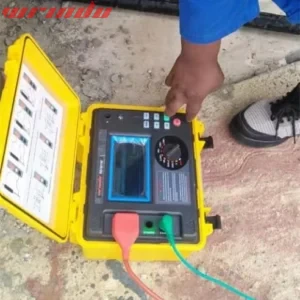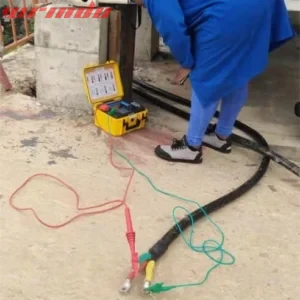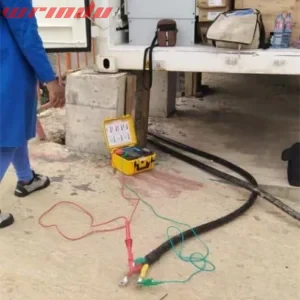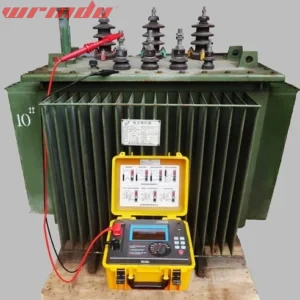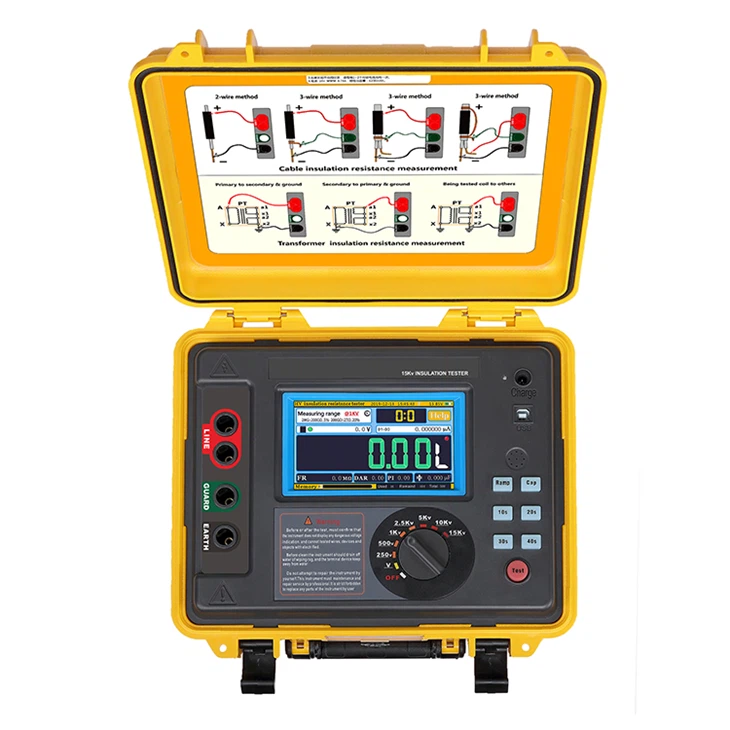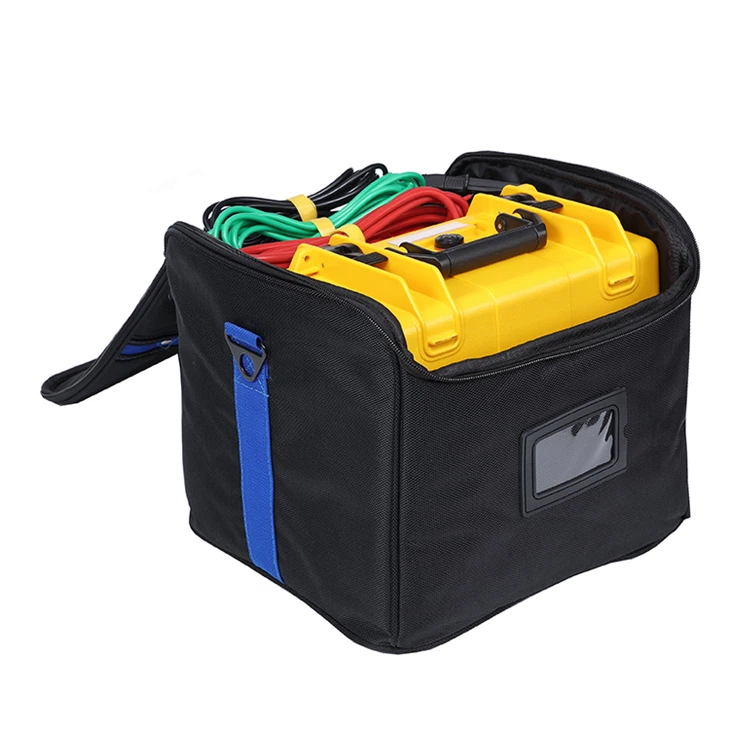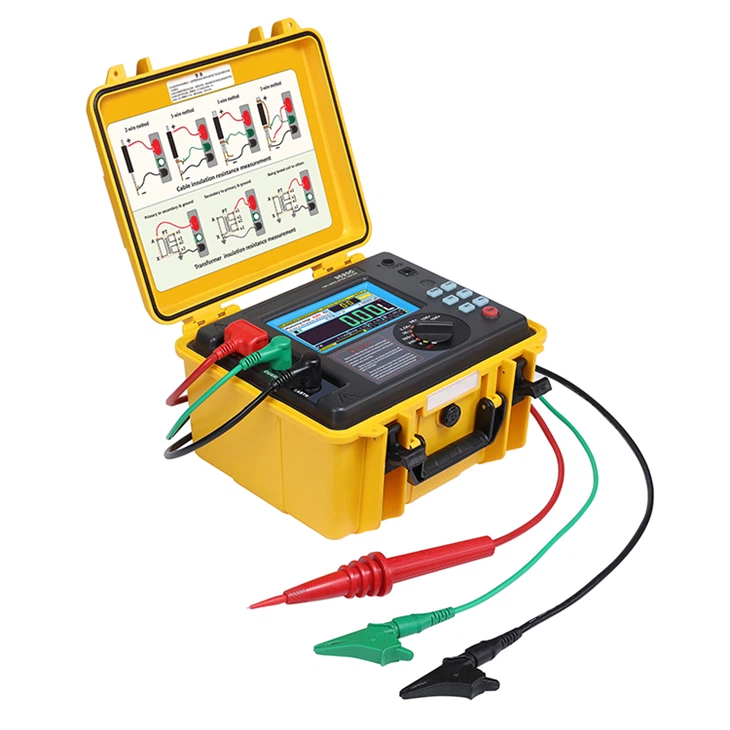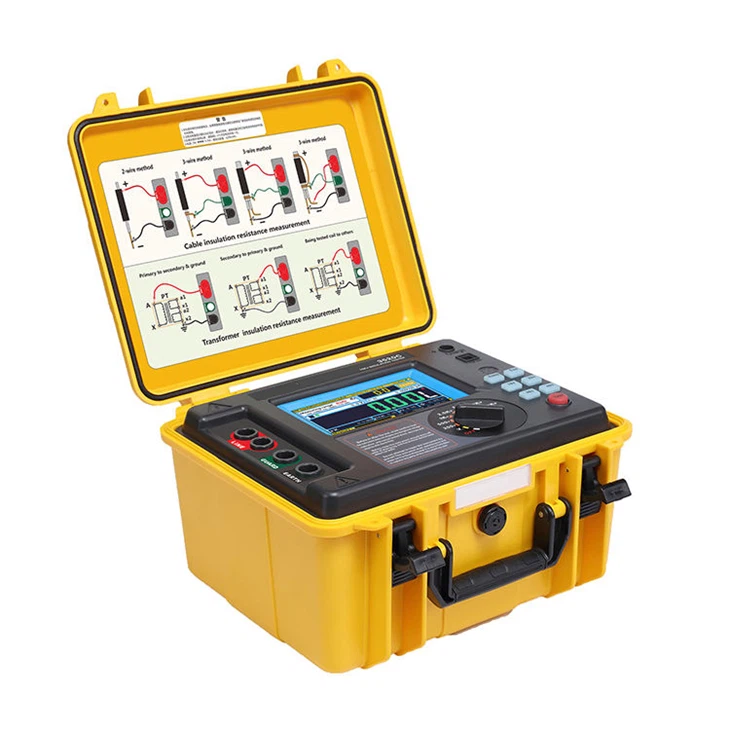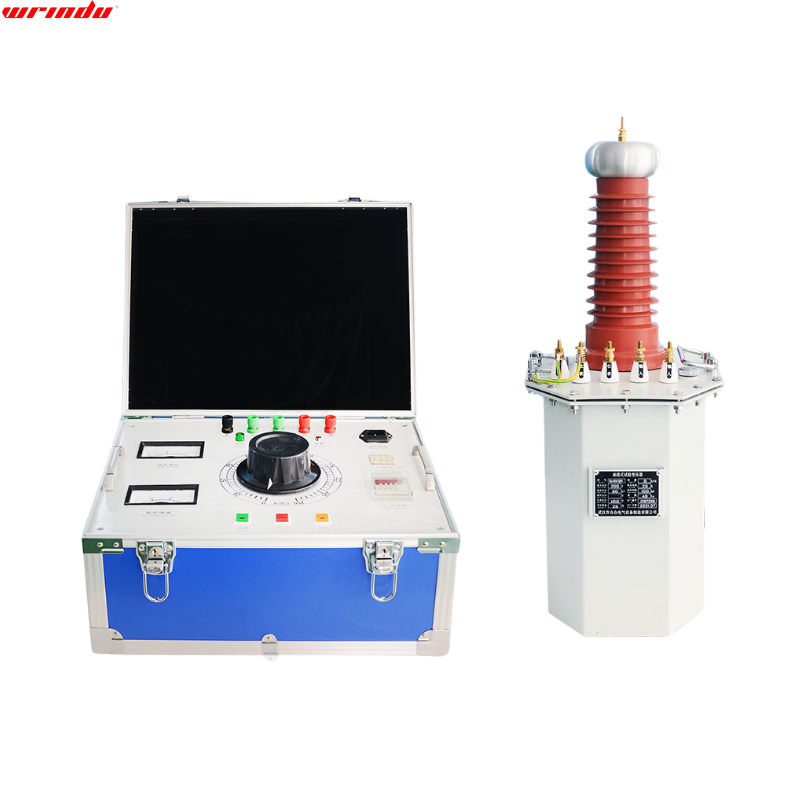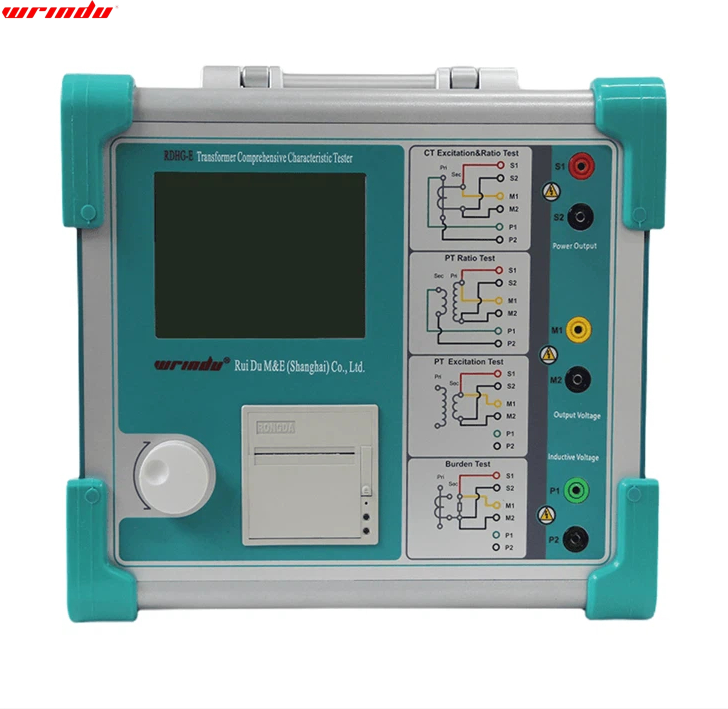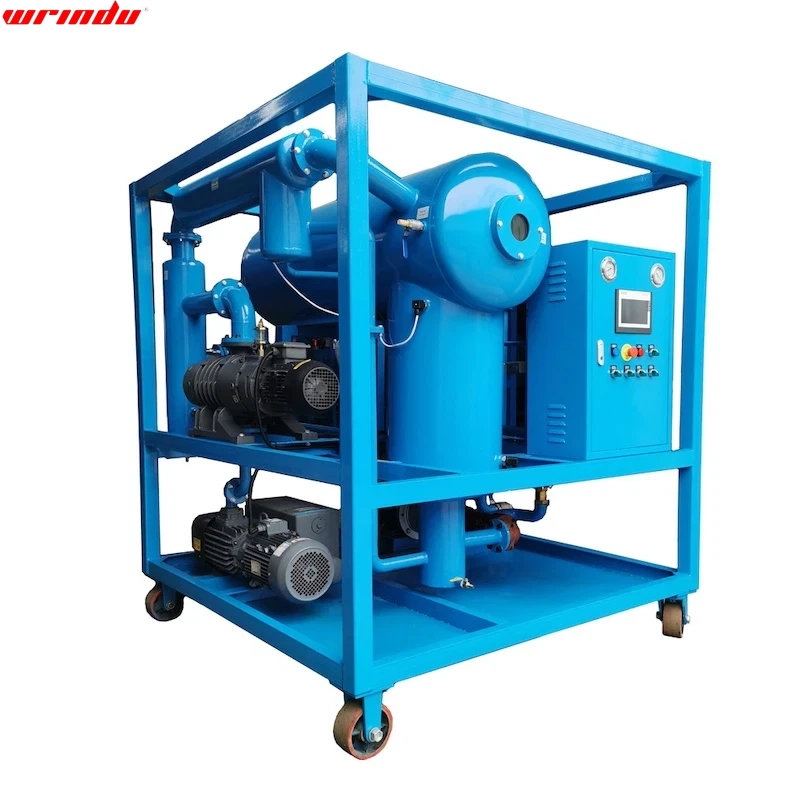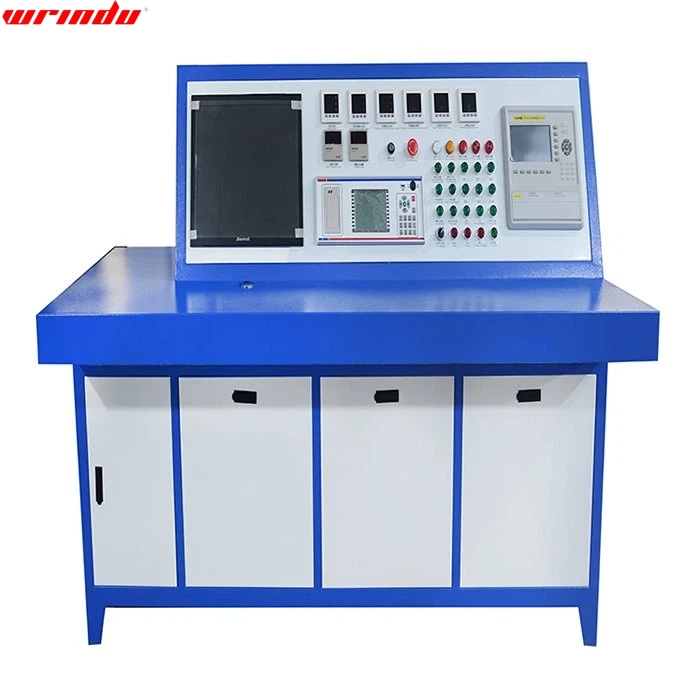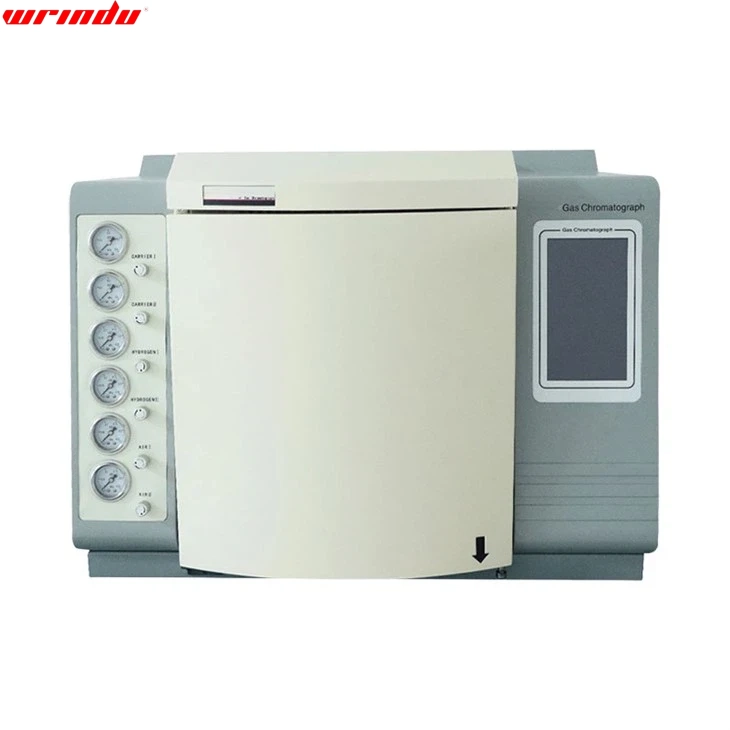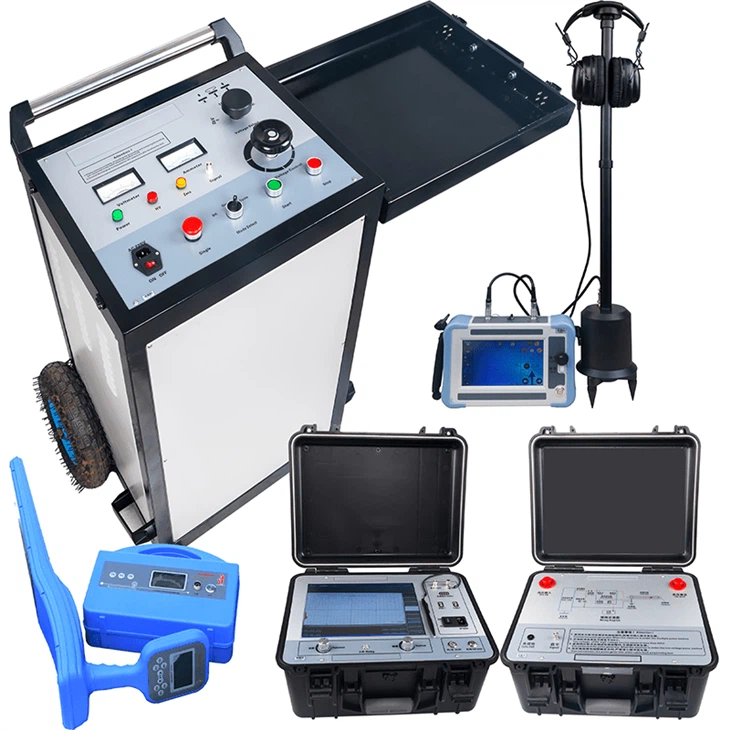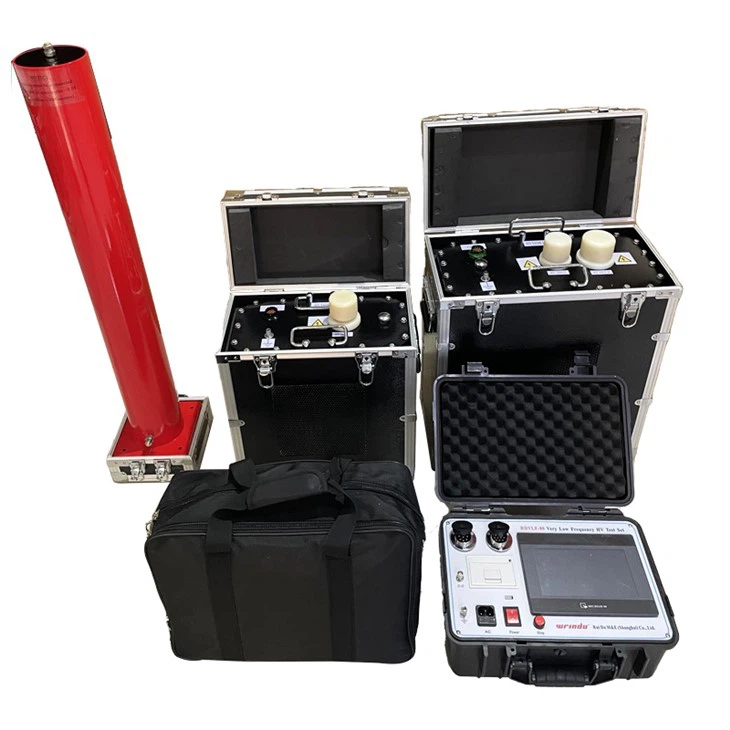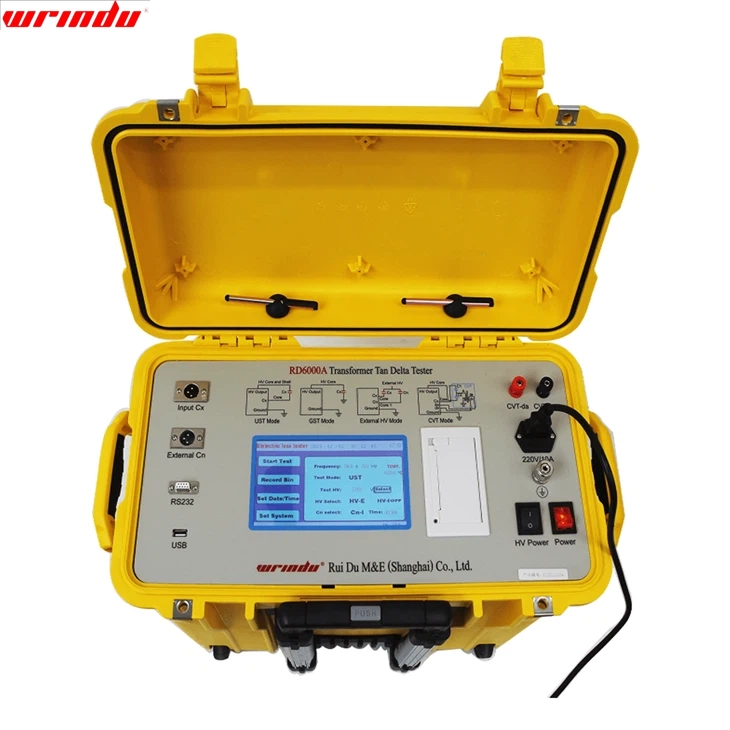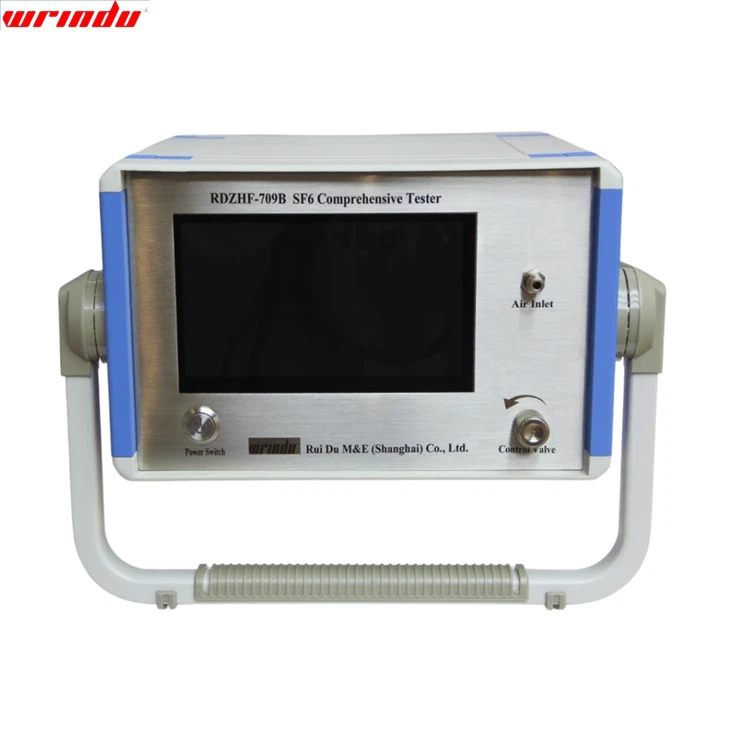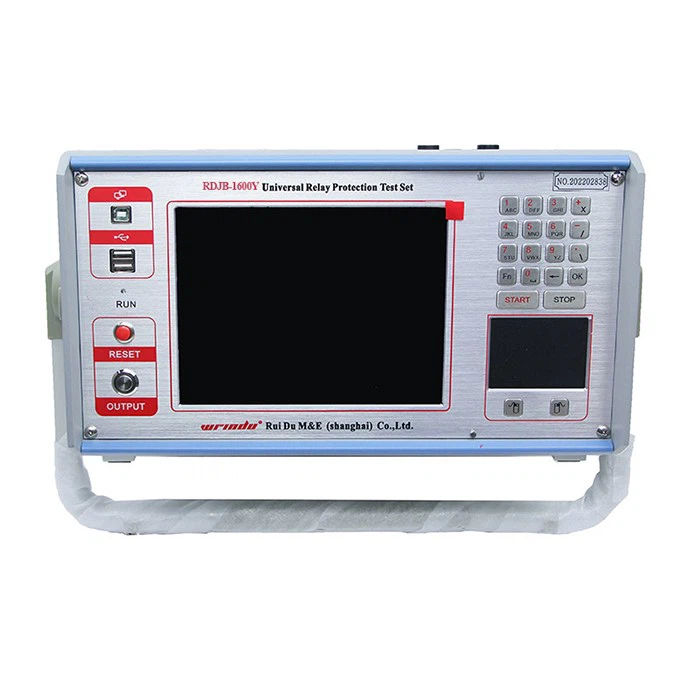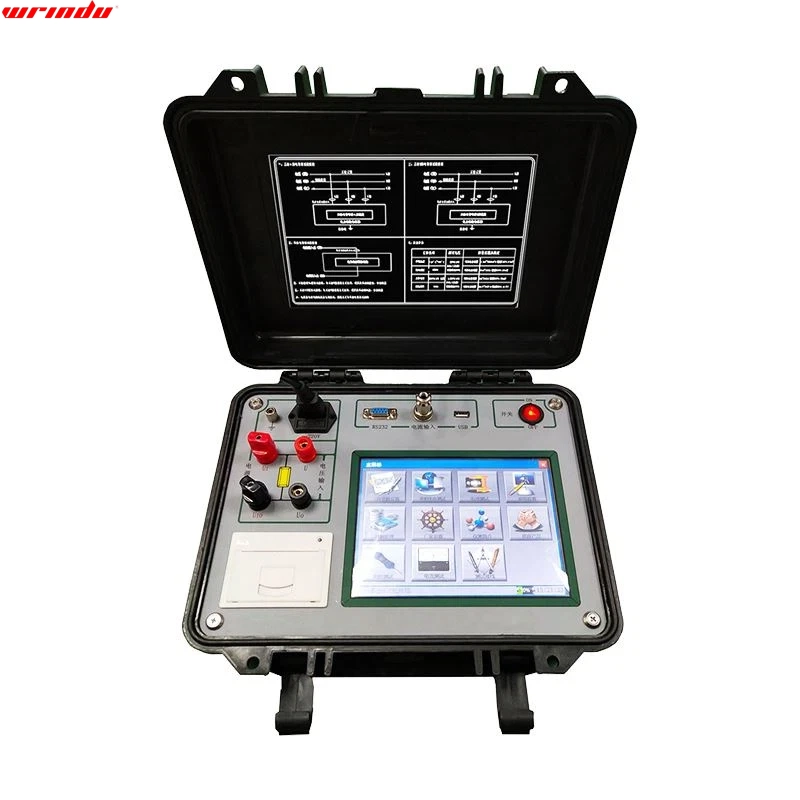OVERVIEW
- Wrindu’s ideal digital insulation resistance tester is robust, with complete insulation resistance parameter tests and excellent anti-interference performance. It plays a vital role in detecting insulation resistance in cables, motors, generators, transformers, mutual inductors, high-voltage switches, lightning arresters, and other equipment. It has a wide range of applicability.
- Its design is unique and equipped with a proper colour touch screen. The test data and battery power are visible on the same interface, which significantly improves the intuitiveness and convenience of operation. The unique combination of knob switch and button design makes the use process smoother and more efficient, bringing users an unprecedented simple experience.
- It adopts a sturdy and durable double-layer structure in terms of shell construction. When in the closed state, the protection level is as high as IP65, which can not only effectively block the invasion of moisture and dust but also provide solid and reliable anti-collision protection for the instrument during transportation and storage, ensuring that the instrument is always in good working condition.
- Our ideal digital insulation resistance tester is widely used in many industries for its excellent performance and quality, including electric power, telecommunications, meteorology, computer rooms, oil fields, electromechanical installation and maintenance, and power supply departments of industrial and mining enterprises. It has become an indispensable assistant for professional testing work in these fields and is deeply trusted and favoured by most users. It is the only choice in the field of professional testing.
CHARACTERISTIC
- 1. Equipped with a large-capacity rechargeable lithium battery.
- 2. Unique, strong anti-interference technology can maintain stable test performance in environments with large, distributed capacitance (long-distance cables) or places with substantial electromagnetic interference (substations).
- 3. Test data can be displayed on the same screen with a touch-color screen, making test operations and historical records very convenient.
- 4. The measurement mode can be freely set, including selecting PI and DAR calculation formulas and setting test voltage and duration.
- 5. A built-in voltage monitor will automatically check the live voltage of the object under test. The test will automatically stop once the voltage exceeds 36 volts, protecting the instrument and the user.
- 6. A built-in current monitor will automatically display the current in the test circuit.
- 7. Built-in temperature monitor to automatically display the instrument box’s current temperature and humidity conditions.
- 8. The automatic discharge function quickly releases the charged power on the object under test after completion without adding a discharge circuit.
- 9. This ideal digital insulation resistance tester has a large-capacity test record storage space; the test records can be browsed and analyzed directly on the instrument. It can automatically store real-time test data, including test dates and timing, and can store 1,000 groups.
- 10. It has a USB communication upload function, which can upload the recorded data to the computer for data storage and analysis.
- 11. It has a Bluetooth communication function, transmitting the test results to the mobile phone.
For more information about insulation resistance testers, please click More.
To request the latest quotes, please click Contact Us.
FAQ
Q: Which meter measures insulation resistance?
A: The ideal digital insulation resistance tester measures the insulation resistance of electrical systems and assesses the performance of equipment, cables, and insulation materials. This instrument applies a high-voltage power source, measures current, and calculates insulation resistance to ensure the safety and reliability of electrical systems.
Q: How do you test for insulation resistance?
A: Using an Insulation Resistance Tester:
1. Preparation:
– Disconnect the equipment or system from the power source.
– Ensure capacitors are discharged.
2. Set Up the Tester:
– Set the appropriate voltage range on the insulation resistance tester.
– Depending on system specifications, common test voltages include 500V DC, 1000V DC, or higher.
3. Connect the Tester:
– Connect the positive lead (usually red) to the tested conductor or equipment.
– Connect the negative lead (usually black) to the grounding point or the equipment’s grounding point.
4. Perform the Test:
– Initiate the insulation resistance test using the tester’s controls.
– The tester will apply the selected voltage to the insulation, measure the resulting current, and calculate resistance using Ohm’s Law: R = V/I, where R is the insulation resistance, V is the applied voltage, and I is the measured current.
5. Record the Results:
– Record the measured insulation resistance value.
– Compare the result with the system’s recommended or specified minimum insulation resistance.
Q: What instrument is used for the insulation resistance test?
A: Insulation resistance testing uses an “Insulation Resistance Tester” or “Megohmmeter.”
Q: What is the standard for testing insulation resistance?
A: Insulation resistance should be around one megohm per 1000 volts of operating voltage, with a minimum of one megohm. For example, a 2400-volt motor should ideally have a minimum insulation resistance of 2.4 megohms. Plants may set their own standards based on equipment and operational needs for better performance and safety.
APPLICATION
